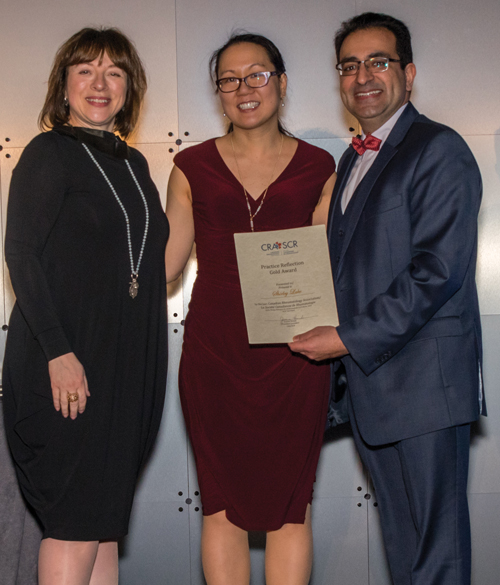Summer 2018 (Volume 28, Number 2)
The 2018 Practice Reflection Award: Self-assessment
Download PDF
Co-winners of Gold
Shirley Lake, MD, FRCPC,
MSc (QIPS); and
Natasha Gakhal, MD, FRCPC
One of the challenges rheumatologists face is that rheumatoid arthritis (RA) patients get infections such as influenza. The Canadian Rheumatology Association (CRA) Guidelines for RA management recommends that all RA patients receive an influenza vaccination every year. An audit of our practice found only 40% of patients had documentation of vaccination for influenza. Along with the rheumatology trainees at the University of Toronto, we set out to raise the influenza vaccination rate of RA patients to at least 80% in one year. This project was completed as part of the rheumatology co-learning quality improvement curriculum, a program to teach rheumatology trainees about quality improvement and patient safety.
Initially we thought the low vaccination rate was only because rheumatologists were forgetting to remind their patients to get the vaccination. Another audit a few months later revealed no increase in uptake, and there was still no consistent documentation of patients being reminded to get the vaccine or receiving the vaccination. It’s important to understand a problem first before rushing into a solution. We created a fishbone diagram and surveyed patients and this identified the most common reasons for patients not getting the influenza shot:
- Patients did not know about the need for the influeza shot and its safety with their condition and while on their medication;
- Patients did not know a convenient place to get the influenza shot; and
- Rheumatologists were not reminding their patients due to forgetfulness or lack of time.

Dr. Shirley Lake receiving her award from Dr. Joanne Homik and Dr. Raheem Kherani. Dr. Natasha Gakhal was not in attendance.
For our quality improvement intervention, we made a patient pamphlet to provide information on the need for the influenza vaccine. It also contained a walking map to the hospital pharmacy where they could not only refill their medications, but also receive the influenza shot. An audit showed this intervention only marginally improved uptake and was not sustained because the pamphlets were small and difficult to read. For our next Plan-Do-Study-Act cycle, we made the pamphlet more patient-friendly and also created neon stickers to be placed on prescriptions by the rheumatologist to remind pharmacists to administer the influenza vaccine when they renewed the patient’s medications.
Our last audit showed that 60-90% of patients received the pamphlet and/or sticker and 65% of RA patients got the influenza shot. Although we did not achieve our 80% goal, we had a relative improvement of 60%. This continues to be a work in progress. More details on the process are described in the September 2017 edition of The Journal of Rheumatology.
Shirley Lake, MD, FRCPC, MSc (QIPS)
Assistant Professor,
Division of Rheumatology,
University of Toronto,
Toronto, Ontario
Natasha Gakhal, MD, FRCPC
Rheumatologist,
Women’s College Hospital,
Toronto, Ontario
|
